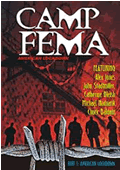PART 4
By Thomas R. Horn
January 27, 2015
NewsWithViews.com
PART 4 -- Susan Atkins: When Charles Manson Took The Role Of Jesus Christ
The
breakdown by Susan Atkins discussed in PART 3 of this series was not
heeded as a warning. Atkins moved to the Haight-Ashbury district and
into a big home among a dozen hippies all living together directly
next door to Janis Joplin, whose boozing, impromptu playing sessions
she would listen to while she took dope and zoned out on the porch.
She describes a time in her life  when
finally her insatiable hunger for drugs was satisfied. She was living
a thrill—the kind you hear about in movies, including the celebrity
next door and the constant adventure of the peace movement drawing
the attention of the FBI to her residence. Sadly, this fixed nothing
for Atkins, and she remained direly isolated from the world around
her. She was now able to start counting the number of “families”
(including her biological family) that she had once been a part of,
only to pass through, always remaining the stranger: destination unknown.
when
finally her insatiable hunger for drugs was satisfied. She was living
a thrill—the kind you hear about in movies, including the celebrity
next door and the constant adventure of the peace movement drawing
the attention of the FBI to her residence. Sadly, this fixed nothing
for Atkins, and she remained direly isolated from the world around
her. She was now able to start counting the number of “families”
(including her biological family) that she had once been a part of,
only to pass through, always remaining the stranger: destination unknown.
Regarding what Atkins might have become if someone had just intervened and helped her choose another spiritual and lifestyle path early on: It doesn’t pay off to stop the case study here and spend time playing the blame game and analyzing the girl who “might have been” under different psychological and developmental conditions. The details of this case study, as well as others to follow, will by default inherently and continuously ask the question regarding the intervention that could have taken place, but never happened, in the path of a person heading toward uncertainty, disorder, loneliness, and eventually destruction. What makes this (and the “Tex” Watson) case study so unique is that, unlike many others featured in this book, someone did intervene and “counsel” her spiritually—someone who spoke constantly of the love of Christ. Unfortunately, that person led her to believe that he was the Christ.
For the sake of truly understanding what Atkins faced in the days following her dancing gig at the club where she met LaVey, we are truly challenged to use our imaginations as never before. The scenes as described in the book by Atkins are so far out of this world to anyone who hasn’t fully experienced the “trip” of drugs the way she and her Family had, that just short of including a word-for-word copy/paste of the first, ninth, and tenth chapters of Child of Satan, Child of God, there is just no adequate description for it.
While under the influence, Atkins would lie in the cross position on the floor, with arms outstretched, and calmly embrace the thought that she had to die for “these people” (her drug-dropping cohorts). She relives the accounts of feeling so “one” with those around her that when she made love with a random stranger, she was making love with herself. She saw monsters and animated skeletons and heard voices coming out of the sink.
Strengthening Atkins’ testimony of these days is a statement by Leslie Van Houten (convicted murderess in the LaBianca case) in an interview with Diane Sawyer years after the murders, just after a very telling question from Sawyer to Manson:
SAWYER, TO MANSON: You had them thinking you were Jesus Christ. How did you do that?
MANSON: Just bein’ myself. All men are Jesus Christ. [He makes an odd, “bet-you-didn’t-know-that” facial expression at her.]
[Scene blips back to the interview between Sawyer and Van Houten.]
VAN HOUTEN: Sometimes he would reenact the crucifixion when we were on LSD, and it was…very realistic.
SAWYER: You mean, you would pretend that he was being nailed?
VAN HOUTEN: Oh yeah…yeah…and go through the whole thing, and then make the connections of Man-son, son-of-man, you know, and then the questions would begin: “Would you die for me?”
[Scene blips back to the interview between Sawyer and Manson.]
SAWYER, TO MANSON: Did you ask them to die for you?
MANSON: Sure, sure, sure, sure. That’s basic Christian philosophy.[i]
These
thoughts grew for Atkins and became more the norm for her as her mind
drifted farther and farther outside the realms of reality; all the
while, 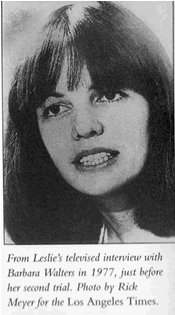 Manson
gained more and more control over her and so many others, always entering
the scene with some soft-voiced, enticing love-fest that perpetuated
servanthood. (And he often assigned them names that were very different
from their own. This is a commonality within brainwashing cults to
further strip away one’s individuality. It was in one of these
moments that Atkins was given the Family name “Sadie Mae Glutz.”)
Atkins is not the only one who described Manson as incredibly powerful
and Christ-like. Whether he was sober or also under the influence
(as mentioned earlier, the witness accounts are fuzzy on this detail),
when he walked into a room, men and women alike stopped and listened,
waiting for the next profound revelation to grace the ears of the
group that was rapidly becoming “his people.”
Manson
gained more and more control over her and so many others, always entering
the scene with some soft-voiced, enticing love-fest that perpetuated
servanthood. (And he often assigned them names that were very different
from their own. This is a commonality within brainwashing cults to
further strip away one’s individuality. It was in one of these
moments that Atkins was given the Family name “Sadie Mae Glutz.”)
Atkins is not the only one who described Manson as incredibly powerful
and Christ-like. Whether he was sober or also under the influence
(as mentioned earlier, the witness accounts are fuzzy on this detail),
when he walked into a room, men and women alike stopped and listened,
waiting for the next profound revelation to grace the ears of the
group that was rapidly becoming “his people.”
The deeper into “oneness” that Atkins’ mentality drifted, the more her sense of self or her own identity blurred away, and she “fit in.” As was the popularly embraced mentality of that time, she finally found herself and her sense of belonging by completely abandoning her own identity in trade for togetherness with others. Not surprisingly, however, the more she welcomed her denial of self and identity, the more she craved attention from others for her own uniqueness and personhood. Initially, at the center of this craving was “Charlie” (Manson), who made Atkins, among so many others, feel unique, special, even magical (the belittling came later).
The more attention he poured on his followers, the more they craved his interest, wanted his blessing, dropped LSD, and got high, sacrificing “selfs” and entertaining thoughts of necessary sacrifices around them for the overall good and peace of mankind. When Charlie reprimanded, heads would turn, all eyes watching and learning from the “teacher” in all his wisdom, yet there would be a continual acceptance all around from the brethren of this cult for the sheep who had gone astray, just like any family should be, so nobody ever felt left out of the “enlightened true love” that this cult spoke of. (This mentality proved later on to be the reason why, when the Family turned so radical that their earthy love mantra was an oxymoron in contrast to their growing violence, they didn’t feel contradictory. It was very much the opposite. The more they “loved” from such an enlightened position away from the rest of the broken world, the more they convinced themselves, with the help of the drugs, that this love had to be protected, preserved, and passed on at any cost, evidently including the necessary evil of murder.)
But, in addition to love, Manson constantly indoctrinated life from a perspective that, although a popular state of mind in that era and often harmless for most, would eventually lead to a no-rules core for an up-and-coming slaughter dynasty. He preached that there was no time; time was an illusion, a restraint, a distraction. He made his Family get rid of all their watches and timepieces, as there was no past and no future—only today, only now. With wild, passionate eyes, he paced back and forth, telling the spiritually hungry group that they were no longer tied to any baggage or any other families or relationships, and stopping only momentarily to light another joint and pass more around for the Family. Bible verses fell out of his mouth regularly, usually out of context or twisted, supporting whatever ideas he held with an ultimate last word. He always had an answer for everything. In interviews (then and still), he speaks with confidence and authority, never having to stop and think of what he plans to say, as if he’s always had the answer in his head and is waiting for someone to ask. (There is another side to this coin, however. Despite his ability to keep up with any interviewer and project himself as a learned leader, most of what he says does not make sense to the average person, and he often answers questions with other questions. His Christian theology is, when compared to most conservative Christian theologies, desperately warped.)
Manson would certainly not be the first or last in history, by any stretch of the imagination, to use Bible Scripture in twisted ways for his own attention or gain. Yet, his philosophies were delivered with just the right charismatic chemistry to inspire and charge those with ears to hear (or those with drugs to confuse) his madness and take it as gospel. To most, his speeches regarding the severance of time and past baggage were just more average, earthy, feel-good sermons delivered by your 1960s hippie-next-door. Drugs are evidently more powerful than this author had realized to have eventually inspired belief in the ridiculous Helter Skelter plan, which began to unfold rapidly after Manson had established himself as the unchallenged leader of this assembly. When he did begin to incite violent threads of thought into his followers, he covered all the bases, including the “I did nothing wrong” thoughts that they should embrace post-crime (the quote below has been dramatically shortened to remove unnecessary repetition in Manson’s redundant programming style):
Guilt. Look at guilt. What is guilt anyway? It is just something mommy and daddy put in you to control you to do what they wanted you to do.… You are your own person, and you just do what you want to do. Do what you do, and don’t think about it. There is no guilt!… Guilt is all in your head. It is an illusion. It isn’t real. Everything you see is an illusion, a figment of your imagination.… Get outside yourself and look back at yourself, and you will see that even you are an illusion.[ii]
Ideally,
for someone like Manson, who was going to become the king of the world
in the apocalypse of Helter Skelter, one would need plenty of offspring
within the Family, even if they weren’t his, biologically speaking.
When Atkins discovered she was pregnant with the baby of “New
Bruce” (his given name in the Family, not to be confused with
“Old Bruce,” another “sheep” who had left
the fold for a time to travel the world), Manson was ecstatic and
celebratory, announcing that they would need a lot of children to
be born among them. He followed up with his plans to raise these children
to be “free,” never  experiencing
the world around them or being forced into any expectations (including
the education system).[iii]
experiencing
the world around them or being forced into any expectations (including
the education system).[iii]
During her pregnancy and after the move to the infamous Spahn Ranch, Atkins describes a new level of spiritual peculiarity that took place within her when she and some of the other Family sisters were staying temporarily at an apartment in town. Manson had ordered Atkins and a few other girls to move away from the Family for a time, although nobody was ever sure of his motive for this, as he only said the “family” concept would never work, but gave no other reasoning. By this point, however, Manson was allegedly beginning to show his true colors, abandoning some of the love and togetherness for power and control, and it’s a theory that he ordered them to move out just to exercise this control, since they were gone such a short while. Several times, during moments of clarity or sobriety when Manson’s brutality was more transparent, Atkins attempted to leave, but either stayed on or returned shortly. On one occasion she speaks of during her 1993 parole hearing, Atkins promised a man she would take care of him and his household if he would help her get away, but when she went to get her things, she says Manson led her to a back room to observe a Family sister whom he had severely beaten for threatening to leave the ranch.[iv] There are many other accounts of this kind of control in Manson literature, to those with the interest to read further. To quote Catherine “Gypsy” Share in a different episode of the previously mentioned Most Evil series:
And [Manson] looked at Clem, and he says, “Clem, would you do anything for me?” and Clem said, “Sure, you know I would.” [Manson] said, “This is what I want you to do. If Gypsy tries to leave, I want you to hunt her down, find her, tie her behind a car, and drag her, don’t kill her, just drag her all the way back to Spahn Ranch, slowly. Would you do that for me, brother?” And Clem grinned and said, “Sure.” Then [Manson] looked at me and said, “Gypsy, are you going anywhere?” and I said, “No.”[v]
During the time of Atkins’ separation from Manson, Atkins had begun to nurture the same manipulation and power skills over people as she had seen in Manson, as the pages of her book tell. Slowly, she observed herself becoming more and more like him in her thoughts and actions, and she could impersonate him to others’ amazement. The girls living with her during this time would follow her in the same way they would follow Manson, although Atkins had never officially been labeled as leader in his absence. As these skills increased, she began to know what the girls were thinking, just as Manson had mysteriously been able to do, and she became aware that she could control them and gain their devotion as a result. One night, during an acid trip, the comparison of herself with Manson exposed something to her in a profound way:
It was late at night. Everyone was tripping. As I sat watching the other girls, I was aware of other persons within me.… They were alive, moving, talking, laughing. I immediately recognized them as the same beings I had sensed in Charlie. My imitation of Charlie was perfect because we had the same things inside us.[vi]
Shortly after this experience, and evidently after Manson had worked out his concept of a “family,” Atkins and the other girls were once again happily installed at home with the Family at the ranch. The longer these people (mostly the women) were in the presence of Manson, the more they obsessed over his attention and completed favors, waited on him, and doted on him from every angle (at one point they even hand-sewed him a vest edged with lining and tassels made with the hair from their heads[vii]). The competition for Manson’s blessing and attention grew extemporaneously, to the point that when his mannerisms began to grow increasingly angry, violent, or simply uncaring, the women of the Family who had been brainwashed to so much self-sacrificial thought overlooked the change and chalked it up to the burdens of leadership, continuing to follow him unconditionally.
When, at seven months pregnant, Atkins took acid (she openly acknowledges within her book that taking drugs while pregnant was incredibly selfish) and sent herself into early labor, Manson entered the room during her contractions and told her to go boil water for him so he could shave. Obediently, she did as he had asked. Shortly after the baby was born at the ranch, the umbilical cord tied off with the G string of a violin, Manson showed even more bipolar tendencies when he would angrily grab the baby by the feet and whirl him in circles an inch above the rocky ground, only to praise the child and dote on him immediately afterward.[viii] (Atkins was the second in the Family to bear a child; the first, born of Family member Mary, was given the name “Pooh-Bear.” Atkins named her son Ze Zo Ze Cee Zadfrack Glutz. He was later named, more sensibly, “Paul” by his adoptive parents after the murders. After Atkins’ imprisonment, she never saw or heard from her son again.)
Atkins likens Manson’s treatment of her in those days to playing her like a yo-yo, praising her one minute and putting her down the next. But while under the influence of a steady stream of LSD, she remained convinced that he was righteous. Her desire to please him became insatiable, so much so that by the time he approached her and told her to kill Gary Hinman for his money, she found herself considering it. When he came to her, made her feel insignificant by telling her she belonged in the kitchen, and then challenged her to prove herself with this dirty deed, the immediate thought that rose up inside her was to the tune of an adolescent “I’ll show you.” By this time, with the war bringing reports of deaths and destruction, and with riot chaos daily, not to mention the highly publicized assassinations of Martin Luther King Jr. and Robert F. Kennedy (only years after the assassination of John F. Kennedy), essential and necessary murder, as a lesser evil for a greater cause, was a growing theme everywhere. Evidently, it wasn’t a huge leap for Atkins to think that Hinman might be a necessary martyr for Manson’s brave and godly cause.
To Die for a Cause
Differing
from some of the other senseless murders this group would commit,
Gary Hinman was actually a personal friend of the Manson Family. When
 Atkins,
Beausoleil, and fellow Family member Mary Brunner approached his house,
he welcomed them in with a smile. The story is disturbing, not simply
because it is of murder, but because of the gentleness this man showed
from the moment they entered his house and his true love for fellow
man and detestation for violence, even until his untimely end. At
one moment, according to witness testimonies, during a tussle, he
even managed to get his hands on the gun, which he subserviently handed
back to Beausoleil, saying that he didn’t believe in violence.
When Manson showed up and slashed Hinman’s face and ear with
a sword, he merely fell to the floor and cried, refusing to retaliate,
and saying naught but a reminder to Manson that he thought Manson
was his friend. Atkins, terrified to the point of shaking, cared for
Hinman’s wounds and fed him soup, to which he replied by calling
her an angel. (Her reaction was to simply leave the room, because
his kindness in the midst of such hostility disturbed her.) This went
on for days; no amount of coaxing from the Manson clan would change
Hinman’s story that he didn’t have any money. Atkins described
this time as surreal and unreal. Eventually convinced that Hinman
was telling the truth, his tormenters finally coerced him to sign
over the papers on his vehicles, then Beausoleil saw no way out of
the situation but to cover the ordeal with murder.
Atkins,
Beausoleil, and fellow Family member Mary Brunner approached his house,
he welcomed them in with a smile. The story is disturbing, not simply
because it is of murder, but because of the gentleness this man showed
from the moment they entered his house and his true love for fellow
man and detestation for violence, even until his untimely end. At
one moment, according to witness testimonies, during a tussle, he
even managed to get his hands on the gun, which he subserviently handed
back to Beausoleil, saying that he didn’t believe in violence.
When Manson showed up and slashed Hinman’s face and ear with
a sword, he merely fell to the floor and cried, refusing to retaliate,
and saying naught but a reminder to Manson that he thought Manson
was his friend. Atkins, terrified to the point of shaking, cared for
Hinman’s wounds and fed him soup, to which he replied by calling
her an angel. (Her reaction was to simply leave the room, because
his kindness in the midst of such hostility disturbed her.) This went
on for days; no amount of coaxing from the Manson clan would change
Hinman’s story that he didn’t have any money. Atkins described
this time as surreal and unreal. Eventually convinced that Hinman
was telling the truth, his tormenters finally coerced him to sign
over the papers on his vehicles, then Beausoleil saw no way out of
the situation but to cover the ordeal with murder.
In the days following (Beausoleil left the Family with the intention to come back when things had cooled off), everyone was shaken, and several departed from the ranch for good, leaving only the radicals without any sounding board to play off each other’s paranoia and insanity. Soon, twenty-four-hour “guards” (Family tough guys) were chosen by Manson to stand watch. Manson preached Helter Skelter like never before, imploring everyone to be prepared for anything, a kill-or-be-killed fire driving his words now. Everyone in the Family truly believed in it.
When Beausoleil was arrested for Hinman’s murder, the Family was programmed thus: “He’s our brother.… Our enemy has him in its territory and we have to get him out!”[ix] Atkins upped her drug use to crystal speed, methedrine, and, while constantly stoned, she developed a friendship with Watson, still obeying Manson’s orders and jumping on the bandwagon to free Beausoleil. When Manson told her on the evening of August 8, 1969, to grab her knife and go with Watson, she knew in her gut that the “copycat” murders to make Beausoleil look innocent were going to take place. Despite her nearly buried conscience still reaching to her with whatever warning it had left, she obeyed.
In her book, at this moment in the story, Atkins takes full responsibility for her actions, detailing the fact that, although under the extreme influence of crystal meth, she was razor sharp in her consciousness and alert to what was going to happen. With Hinman so recently on her mind, she knew that the Family was capable of true murder, and that this was not simply a child’s game that would end in empty threats and somebody’s front door getting egged. Manson continued to give most of the direction to Watson out of Atkins’ earshot and he communicated much less directly with the girls, but she still knew what the plan was: They were to go to the house that Terry Melcher had lived in before, take all the money they could get their hands on, and then kill everyone present.
|
|
The undertones that pop out from the pages in the way she describes the moments leading up to these murders speak of someone inexplicably torn between what she clearly knows is right and wrong; unendingly devoted to what she thinks is a righteous cause; and who, in the midst of everything, finds herself getting into the car with a knife and a group of uncompromising revolutionary extremists spinning out of control at breakneck speed toward a goal she didn’t even understand—merely out of obedience. Yet, despite how confusing it all had been, a flash of real, untouched-by-Manson clarity hit her. As she writes in her book, this was the instant she truly grasped and understood true, pure evil, and that she, herself, was evil.[x]
As you well know, she followed through with the orders she had been given to participate in the Cielo Drive murders.
When the reality of the malevolence that she and the others committed that night surfaced within her, Atkins had a reaction that many who are familiar with Scripture will recognize as the final tipping point wherein something supernatural completely takes over—perhaps possession? She plopped down on her bed and felt “dead”; it wasn’t like the absence of energy, but like the absence of literal life. She goes on to say: “I have no explanation for how hardened I had become in only a few hours. As I watched the TV reporters, I even laughed as they described the details of the horror.”[xi]
COMING UP NEXT: Insane? Misguided? Possessed? A blend of all three?
TO BE CONTINUED...
Click here for part -----> 1, 2, 3, 4, 5,
© 2015 Thomas Horn - All Rights Reserve
Thomas Horn is the CEO of RaidersNewsUpdate.com and SurvivorMall.com.
Over the last decade, he has authored three books, wrote dozens of published editorials, and had several feature magazine articles. In addition to past articles at NewsWithViews.com , his works have been referred to by writers of the LA Times Syndicate, MSNBC, Christianity Today, Coast to Coast, World Net Daily, White House Correspondents and dozens of newsmagazines and press agencies around the globe. Tom's latest book is "The Ahriman Gate," which fictionalizes the use of biotechnology to resurrect Biblical Nephilim.
Thomas is also a well known radio personality who has guest-hosted and appeared on dozens of radio and television shows over the last 30 years, including "The 700 Club" and "Coast to Coast AM." When looking for a spokesperson to promote their film "Deceived" staring Louis Gossett Jr. and Judd Nelson, "Cloud 10 Pictures" selected Thomas as their spokesperson to explain the Christian viewpoint on UFO-related demonology.
Web Site: RaidersNewsUpdate.com
E-Mail: RaidersNewsUpdate@gmail.com



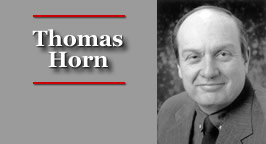

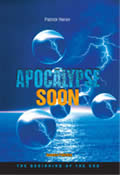


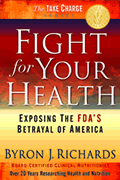

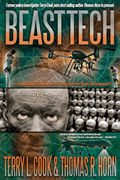



 Share This Article
Share This Article




